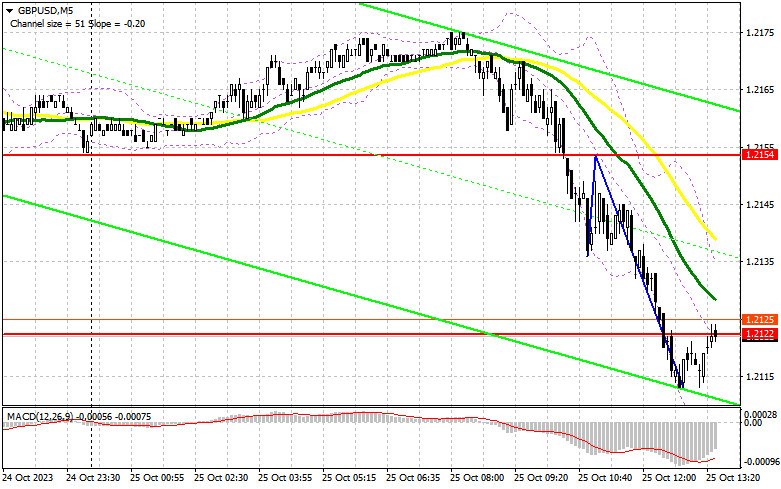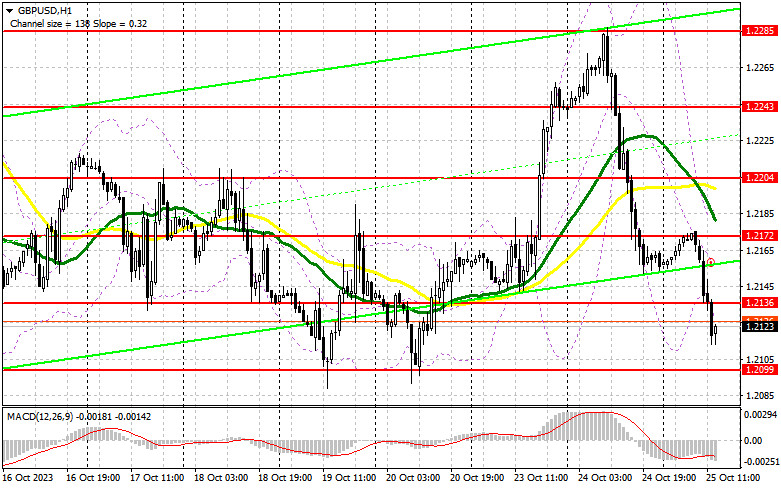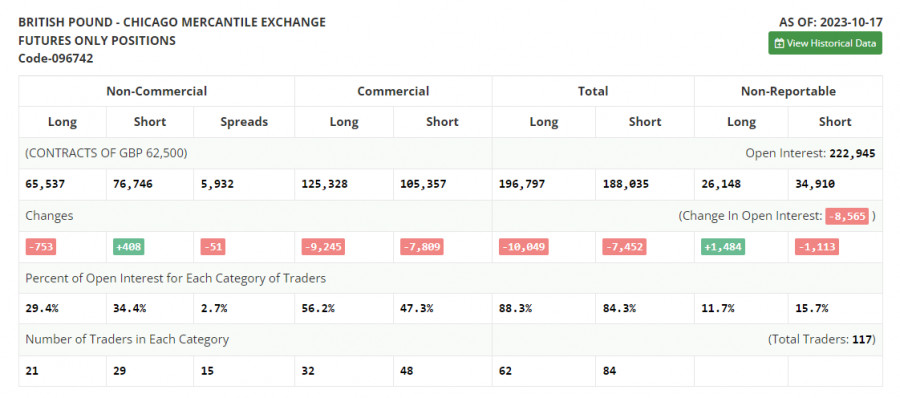
In my morning forecast, I pointed out the level of 1.2154 and recommended making decisions based on it for market entry. Let's take a look at the 5-minute chart and analyze what happened there. A breakthrough in this area occurred, but unfortunately, there were just a couple of points missing for a retest. For this reason, I couldn't enter short positions in the first half of the day. The technical picture was completely revised for the second half of the day.

To open long positions on GBP/USD, the following is required:
It's obvious that after yesterday's data on activity in the UK, there's still no desire to buy the pound. Today, in the second half of the day, attention should be paid to the report on the volume of home sales in the US primary market. An increase in this indicator will lead to further pound selling. Federal Reserve Chairman Jerome Powell's speech is unlikely to touch on monetary policy, so there's no need to expect a sharp drop in demand for the dollar. I plan to take action on buying only after the formation of a false breakout in the area of the nearest support at 1.2099, which is close to the lows of last week. In this case, the target will be the resistance at 1.2136 formed following the European session. A breakthrough and consolidation above this range will allow buyers to return to the market, giving them a chance to reach 1.2172, where the moving averages play on the side of sellers. The ultimate target will be the area of 1.2204, where I will make profits. In the scenario of the pair's decline in the second half of the day and the absence of activity from buyers at 1.2099, the bearish market will return. In that case, only a false breakout in the support area at 1.2070 will signal long positions. I plan to buy GBP/USD on a bounce only from the 1.2038 minimum for a correction of 30-35 points during the day.
To open short positions on GBP/USD, the following is required:
Sellers have shown themselves today, and they are now aiming for further decline with the renewal of support at 1.2099. In the event of weak US data, we will likely see a small upward correction in the market, which will lead to a pound surge. In this case, a false breakout in the area of the new resistance at 1.2136 will signal a sell-off capable of pushing the pair down to 1.2099. A breakthrough and retest from below to above this range will deal a more serious blow to the bull positions, paving the way for 1.2070 and allowing the formation of a new bearish trend. The ultimate target will be the 1.2038 minimum, where I will take profits. In the scenario of GBP/USD's rise during the American session and the lack of activity at 1.2136, demand for the pound will return, and buyers will have a chance for a small correction. In this case, I will postpone the sales until a false breakout at 1.2172. In the absence of a downward movement, I will sell GBP/USD right from the 1.2204 maximum, but only with the expectation of a pair correction down by 30-35 pips during the day.


Indicator signals:
Moving averages.
Trading is taking place below the 30 and 50-day moving averages, indicating a further decline in the pair.
Note: The period and prices of the moving averages considered by the author are on the hourly H1 chart, which differs from the general definition of classical daily moving averages on the daily D1 chart.
Bollinger Bands
In the case of a decrease, the lower boundary of the indicator at around 1.2136 will act as support.
Description of indicators:
Moving Average (a moving average that determines the current trend by smoothing out volatility and noise). Period 50. Marked in yellow on the chart.Moving Average (a moving average that determines the current trend by smoothing out volatility and noise). Period 30. Marked in green on the chart.MACD Indicator (Moving Average Convergence/Divergence – convergence/divergence of moving averages) Fast EMA period 12. Slow EMA period 26. SMA period 9.Bollinger Bands (Bollinger Bands). Period 20.Non-commercial traders – speculators such as individual traders, hedge funds, and large institutions using the futures market for speculative purposes and meeting certain requirements.Long non-commercial positions represent the total long open positions of non-commercial traders.Short non-commercial positions represent the total short open positions of non-commercial traders.The net non-commercial position is the difference between the short and long positions of non-commercial traders.